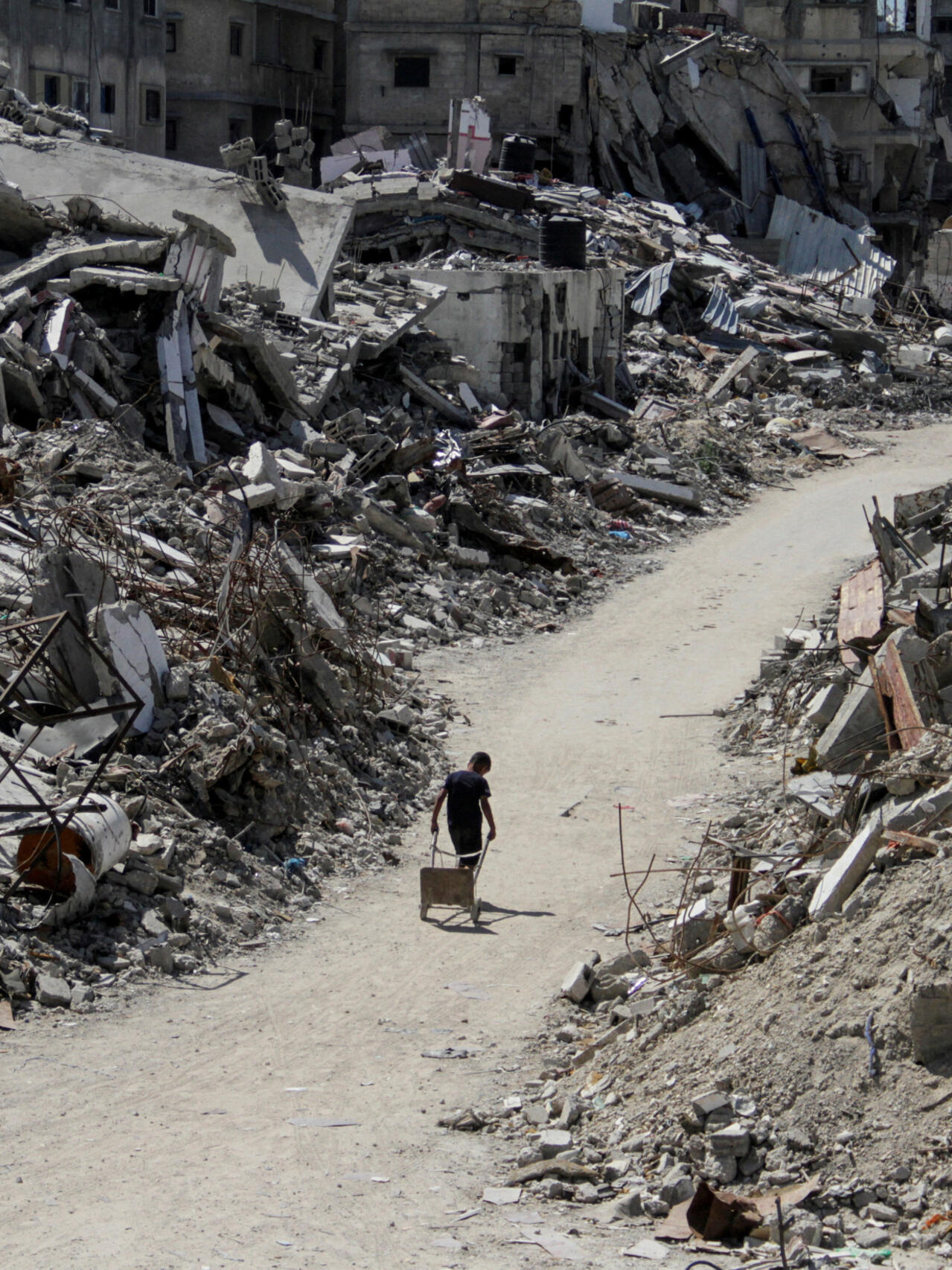Report on Air Quality Degradation in Michigan and Implications for Sustainable Development Goals
A statewide air quality advisory in Michigan has been extended due to persistent smoke from Canadian wildfires, presenting significant challenges to public health and environmental stability. This event underscores the interconnected nature of environmental crises and their direct impact on the achievement of several key Sustainable Development Goals (SDGs).
Impact on Public Health and Community Well-being (SDG 3 & SDG 11)
Meteorologists from the Michigan Department of Environment, Great Lakes and Energy (EGLE) have forecast air quality that is unhealthy for sensitive groups, including children and the elderly, with potential for conditions to become unhealthy for the general population. This situation directly compromises SDG 3: Good Health and Well-being by exposing residents to hazardous levels of particle pollution.
In response, the Southeast Michigan Council of Governments (SEMCOG) has issued public health recommendations, which align with the objectives of SDG 11: Sustainable Cities and Communities to ensure safe and resilient human settlements. These recommendations include:
- Avoiding strenuous outdoor activities, particularly for individuals with respiratory or heart conditions.
- Monitoring for symptoms such as wheezing, coughing, chest tightness, or dizziness.
- Keeping windows closed and utilizing central air conditioning with appropriate filters.
- Refraining from outdoor burning and the use of wood-burning stoves to prevent further air quality degradation.
The fine particulate matter found in wildfire smoke is particularly dangerous, as it can penetrate the lungs and enter the bloodstream, leading to aggravated asthma, decreased lung function, and heart attacks, posing a severe threat to community health.
Environmental Drivers and Climate Linkages (SDG 13 & SDG 15)
The immediate cause of the lingering smoke is a high-pressure system over the Midwest, which is trapping the pollutants. The root of the problem, however, is the Canadian wildfires, a phenomenon that highlights a critical challenge to SDG 15: Life on Land, which seeks to protect and restore terrestrial ecosystems. The increasing frequency and intensity of such wildfires are widely linked to climate change, making this a pressing issue for SDG 13: Climate Action.
The transboundary nature of the smoke plume, which may return to Michigan after shifting wind patterns, demonstrates that environmental degradation does not respect national borders and requires a global approach to climate mitigation and adaptation.
Frequency of Events and the Call for Collaborative Action (SDG 17)
This incident is not isolated, marking a significant trend of deteriorating air quality in the region. The frequency of alerts underscores a persistent environmental challenge:
- This is the 10th air quality advisory for southeast Michigan this year.
- In 2023, Michigan experienced 21 air quality alerts, a sharp increase from six the previous year.
The recurring nature of this crisis highlights the necessity for robust international cooperation, a core principle of SDG 17: Partnerships for the Goals. The situation has prompted calls from local officials for Canada to enhance its wildfire management strategies and efforts by U.S. representatives to address the cross-border impact, emphasizing that solutions require coordinated action between nations and across all levels of government.
Analysis of Sustainable Development Goals in the Article
1. Which SDGs are addressed or connected to the issues highlighted in the article?
-
SDG 3: Good Health and Well-being
The article directly connects the issue of wildfire smoke to human health. It states that the air quality is “unhealthy for sensitive groups, such as children and the elderly” and at times “unhealthy for everyone.” It details specific health effects, such as “aggravated asthma, decreased lung function, heart attacks and difficulty breathing,” and notes that fine particles “can get into people’s bloodstreams,” clearly addressing the goal of ensuring healthy lives.
-
SDG 11: Sustainable Cities and Communities
The focus of the article is on the impact of air pollution on a specific region, “Southeast Michigan.” It discusses measures taken by community bodies like the “Southeast Michigan Council of Governments” (SEMCOG) and the “Michigan Department of Environment, Great Lakes and Energy” (EGLE) to issue advisories and protect the urban and suburban population. This relates to making cities and human settlements safe, resilient, and sustainable, particularly concerning air quality.
-
SDG 13: Climate Action
The article identifies “Canadian wildfires” as the source of the smoke. While not explicitly stated, large-scale and frequent wildfires are widely recognized as a climate-related hazard exacerbated by climate change. The article mentions a significant increase in air quality alerts, from “six… last year” to “21 in 2023,” implying an increasing frequency of these extreme weather-related events, which connects to the need for climate action and adaptation.
-
SDG 15: Life on Land
The root cause of the air pollution discussed is the “Canadian wildfires.” These fires represent a direct threat to forests and ecosystems. The article’s entire premise is based on the consequences of this degradation of terrestrial ecosystems, linking the local air quality problem to the broader goal of protecting and restoring forests and halting biodiversity loss.
2. What specific targets under those SDGs can be identified based on the article’s content?
-
Target 3.9: By 2030, substantially reduce the number of deaths and illnesses from hazardous chemicals and air, water and soil pollution and contamination.
The article’s core theme is the health risk from “unhealthy levels of particle pollution.” It describes how this air pollution can cause illnesses (“aggravated asthma, decreased lung function”) and potentially death (“heart attacks”), directly aligning with this target.
-
Target 11.6: By 2030, reduce the adverse per capita environmental impact of cities, including by paying special attention to air quality.
The article is centered on the “air quality advisory” for Michigan. The efforts by EGLE and SEMCOG to monitor and report on air quality, and advise citizens to “keep their windows closed,” directly address the management of urban air quality as specified in this target.
-
Target 13.1: Strengthen resilience and adaptive capacity to climate-related hazards and natural disasters in all countries.
The issuance of air quality advisories and recommendations for public behavior (e.g., “avoid strenuous outdoor activities”) are measures to adapt to the hazard of wildfire smoke. The increasing number of alerts (“21 in 2023”) highlights the growing need for such adaptive capacity.
-
Target 15.2: By 2020, promote the implementation of sustainable management of all types of forests, halt deforestation, restore degraded forests and substantially increase afforestation and reforestation globally.
The problem originates from “Canadian wildfires.” The existence of these large, persistent fires implies challenges in achieving sustainable forest management, which is the focus of this target.
3. Are there any indicators mentioned or implied in the article that can be used to measure progress towards the identified targets?
- For Target 3.9 & 11.6: The article explicitly refers to “unhealthy levels of particle pollution” and “fine particles.” This directly relates to Indicator 11.6.2: Annual mean levels of fine particulate matter (e.g. PM2.5 and PM10) in cities. The issuance of an “air quality advisory” is a direct result of these pollution levels exceeding a safe threshold.
- For Target 13.1: The article provides a quantifiable measure of the frequency of these events. The statement, “This is the 10th air quality advisory or alert to cover southeast Michigan. EGLE issued six air quality alerts last year and 21 in 2023,” serves as an implied indicator for the frequency and severity of climate-related hazards affecting the region.
- For Target 15.2: While no specific metric on forest area is given, the article’s reference to a “plume of Canadian wildfire smoke” that is large enough to affect a neighboring country for an extended period (“linger over the state”) is an implicit indicator of a significant loss of forest land, which is a failure to meet this target.
4. Summary Table of SDGs, Targets, and Indicators
| SDGs | Targets | Indicators Identified in the Article |
|---|---|---|
| SDG 3: Good Health and Well-being | 3.9: Substantially reduce illnesses from air pollution. | Presence of health effects like “aggravated asthma, decreased lung function, heart attacks.” |
| SDG 11: Sustainable Cities and Communities | 11.6: Reduce the adverse environmental impact of cities, paying special attention to air quality. | Measurement of “unhealthy levels of particle pollution” and “fine particles”; issuance of air quality advisories. |
| SDG 13: Climate Action | 13.1: Strengthen resilience and adaptive capacity to climate-related hazards. | The number and increasing frequency of air quality alerts issued (“10th air quality advisory,” “21 in 2023” vs. “six last year”). |
| SDG 15: Life on Land | 15.2: Promote sustainable management of all types of forests. | The existence of large-scale, persistent “Canadian wildfires” causing transboundary smoke plumes. |
Source: detroitnews.com







